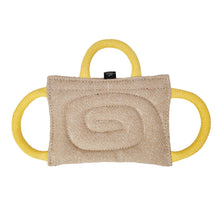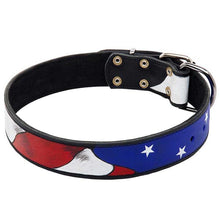13 Reasons Why You Should Start Feeding Your Dog Blueberries Right Now

Does your dog enjoy fresh fruit? If so, they’re not alone. Most dogs enjoy eating some form of fruits, vegetables, grasses, seeds, and more when the opportunity presents itself. Many of these fresh foods are great for dogs and can complement their regular diet.
All dog-safe fruits and vegetables have some nutritional value, but some are more nutritionally dense than others. Blueberries are one little health-packed powerhouse that most dogs are happy to eat that is also filled with yummy benefits that promote well-being.
Although some processed dog foods contain blueberries, no number of processed berries can replace sharing some of the real things with your pet. Blueberries, when included in processed pet foods, usually make up less than 1% of the recipe, which incidentally is just enough to include them on the label.

Health Benefits of Feeding Blueberries to Dogs
Fresh or frozen blueberries are the best way to provide their nutritious benefits to your dog. You can serve them whole or mash them up without altering the nutritional value. Blueberries make a great treat or kibble topper because they:
• Boost the immune system
• Promote strong bones and teeth
• Reduce inflammation
• Provide extra fiber for gut health
• Support a healthy metabolism
• Protect skin and coat
• Provide antioxidants and vitamins to improve health and help keep vital organs healthy

Blueberries accomplish all these wonderful benefits for dogs because they are full of:
1. Phytochemicals that help the immune system do its job, protect cells from damage, help prevent cancer, reduce inflammation, and regulate hormones.
2. Antioxidants that boost overall health and help protect the body from free radicals from disease, found in food, the environment, medications, pollution, and more.
3. Fiber that aids in digestion promotes regularity, helps promote a healthy gut pH and inhibits the growth of bad bacteria.
4. Manganese a necessary micro mineral is required to produce energy and help metabolize protein and carbohydrates and help protect joint health.
5. Calcium promotes overall good health and protects strong bones and teeth.
6. Phosphorus promotes a healthy metabolism, supports kidney function, and helps maintain strong bones and teeth.

7. Potassium supports the heart, nerves, and muscles by aiding in the function of healthy electrical impulses.
8. Magnesium supports a healthy immune system, keeps the heart beating steady, helps regulate blood glucose, and helps bones stay strong.
9. Vitamin A protects healthy vision, promotes healthy skin, and protects the immune system.
10. Vitamin C is an antioxidant that promotes healthy aging, reduces inflammation, increases energy, and supports the immune system.
11. Vitamin E supports the immune system, liver, heart, muscles, and nerve cells, and promotes healthy skin and coat.
12. Vitamin K helps keep the blood healthy so it can clot normally and help protect from some forms of cancer.
13. They are a healthy, tasty superfood that is low in calories, fat, and sodium.

How to Feed Blueberries to your Dog
If you’ve never fed your dog blueberries before, start slowly to avoid digestive upset and to see how your dog tolerates them. You can try feeding fresh, pureed, or frozen to see how your pup enjoys them best. They can stain so don’t feed them on furniture or carpet.
Some pets prefer their berries smashed and others enjoy them stuffed into a chew toy, licking mat, or when fed as a training treat. You can also incorporate them into homemade treats, blend them into yogurt, or baked them into dog cookies.
A general feeding guideline for healthy dogs that don’t have any digestive upset from them is up to 2-4 berries for every 10 pounds of body weight. So, if your German shepherd is 70 pounds, you’d feed about 14-28 berries in a day and only that many after you make sure they don’t cause diarrhea. If your dog has diabetes or other health issues, you should talk to your vet before supplementing any type of fruit or vegetables.

Another way to feed berries is to alternate them with another fresh slightly cooked vegetables and fresh fruits so your dog gets a wide variety of nutrients by feeding a rainbow of colors, just as recommended in a human diet.
If you’re adding additional fresh fruits and vegetables along with the blueberries, simply adjust the number of berries you feed accordingly. A good rule of thumb is to ensure that the total calories from fresh treats or toppers don’t exceed 10% - 15% of the total calories in your German shepherd’s balanced diet.
We can’t wait to hear how your dog enjoys their blueberries best and if you notice any health improvements after feeding them. As always, please feel free to share with your friends.
You might also like: 9 Human Food Treats That Are Good For Your German Shepherd
























